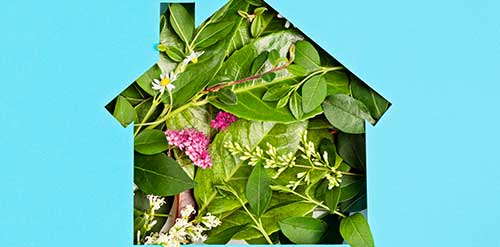Hyundai Motorstudio Senayan Park
Hyundai Motorstudio Senayan Park
Newsroom
-
Make Your Eco-House with These 8 Simple Tricks!
- Hyundai Motorstudio Senayan Park 2022.06.16
-
Keeping the environment must be started from the closest scope, which is the house. As a place to live and as an effort to protect the environment, the design of the house must refer to eco-friendly principles.
If eco-friendly is translated into residential aspects, it will be an eco-house, or an eco-friendly house. The main principle of implementing an eco-house is to focus on protecting the environment. The implementation can vary, for example using renewable energy.
Starting from the building process until it is finished and occupied, the house must not trigger a negative impact on the ecosystem, especially for the environment around the house.
How To Make An Eco-House
Building an environmentally friendly house is not much different from building a house in general, only the focus is different. If you are not sure where to start, the following points can be your guide for creating an ideal eco-house.
1. Building Orientation
Regardless of the location, the orientation of the building will play an important role. Think about various aspects such as access, area, and the climate of the surrounding environment.
The most ideal building orientation in sunny areas is by facing the north or south with lots of openings in the east side, and small windows in the west. For houses in colder areas, the orientation of the building must be opposite.
Also, allocate a green land when planning the orientation of the building. Green land can be in the form of a backyard which will be useful as a household carbon filter.
2. Material
There are many considerations related to materials for eco-friendly homes. If strength and sturdiness are the most important focuses, it is better to use permanent materials such as cement, sand, bricks, and others.
It is a bit different if the aesthetic and attractive aspects are the focus, raw materials such as wood and bamboo can be used. This material is considered to be more eco-friendly because it is categorized as organic and renewable energy.
What must be remembered, the material should not be taken in a way that damages the environment because this would violate conservation principles.
3. Window
The part of the house on the east side should be given a window with a large opening. Its function is to let the sunshine come to the house. On the other hand, the west side window must have a small dimension to limit the sunlight.
The reason is simple. Morning light is able to warm the house without overheating, while afternoon light tends to be hotter, so it must be limited.
Regarding the window design, this is entirely up to personal preference. Note that, the window also functions as a tool for air circulation, not just lighting.
4. Lighting
For eco-friendly house, the lighting aspect must reflect energy friendly. For this, natural light should be prioritized over other energy, for example by utilizing the windows.
But certain rooms still need lights. In this case, choose LED lamps that offer a longer lifespan, up to 30 thousand hours compared to 10 thousand hours of CFL lamps.
As the main source of electricity, solar panels offer better performance in protecting the environment. For the best quality, a solar panel unit can operate for the next 20-30 years with just a single purchase.
5. Watering
Domestic irrigation systems should be considered as well. Water sources should be the main concern, and as much as possible create your own irrigation cycle. The concrete steps are by making infiltration wells, using bio septic tanks, and recycling waste water with a water purifier.
If you live in an area with high rainfall, add a rain 'harvesting' tank as a water storage. This will reduce the risk of flooding and landslides while maintaining the water supply.
6. Furniture
A new house doesn't always have to be new furniture with a well-known brand. Many furniture are produced by recycling wood, which is more eco-friendly than new products.
Reusing recycled furniture means reducing furniture waste that may end up in landfills. If you have more time, try going to the internet and looking at used items that are suitable to your home.
Used furniture still offers a long service, or depending on the condition, it may need a bit of repair. On the plus side, old furniture offers antique value with its own peculiarities.
7. Accessories
Accessories will make the house more than just livable, but also give an aesthetic value. The selected paintings, decorations, carpets, curtains, and ornaments should be environmentally friendly such as recycled vases, used wooden shelves, and other used products.
For instance, when coloring the walls, use water-based paint. The majority of paints are oil-based, and they are not eco-friendly. Given how much time is spent at home, minimizing the chemical exposure is important.
8. Interiors
The interior design could be the most accessed area of the house. In fact, the interior design can affect your mood. Luckily, the majority of eco-friendly interior designs are very aesthetic and pleasing.
The concept of the room may be a classic or contemporary, but eco-friendly elements can present through several interiors. Just bring the outside inside, such as making a garden in the house. Bonsai, lavender and lily, can be placed next to the window or in the corner to make the atmosphere more alive.




